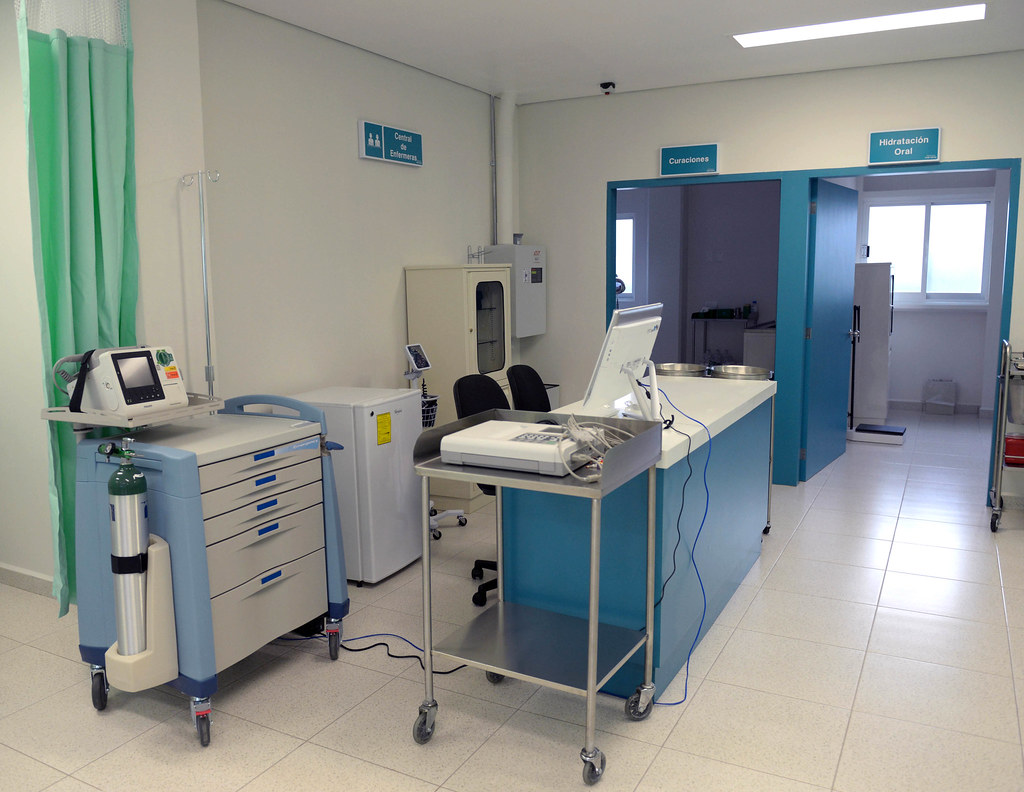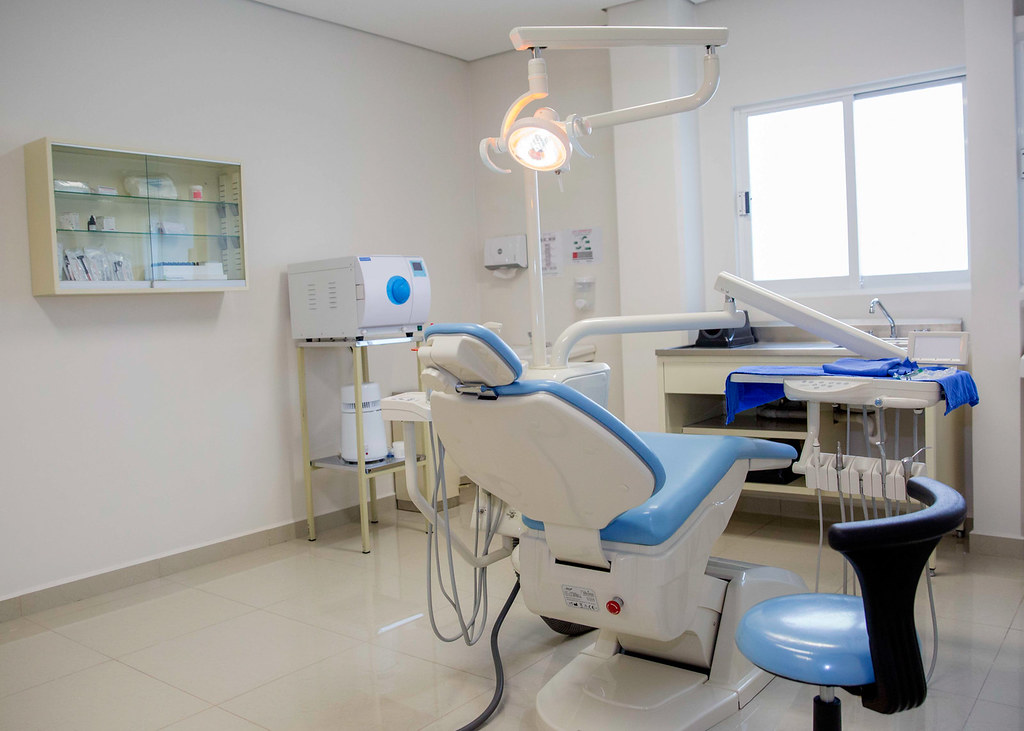
In the demanding arena of neurological health, where conditions like Dravet syndrome and Lennox-Gastaut syndrome present formidable challenges, advancements in treatment offer not just hope, but a tangible path to improved quality of life. Fintepla, known generically as fenfluramine, has emerged as a significant player in this fight, providing a prescription medicine specifically designed to address the severe seizures associated with these complex syndromes in patients aged 2 years and older. Its introduction marks a crucial moment, empowering healthcare providers and families with a new tool in managing these often devastating forms of epilepsy.
However, like any powerful intervention in the medical field, Fintepla is a medication that demands comprehensive understanding, meticulous management, and stringent safety protocols. Its efficacy is undeniable for its approved indications, but its profile also includes a host of important considerations, from its classification as a federally controlled substance to its potential for serious side effects and drug interactions. Navigating these complexities is paramount to ensuring patient safety and maximizing therapeutic benefits, requiring a collaborative effort between patients, caregivers, and their healthcare teams.
This in-depth article aims to dissect the multifaceted nature of Fintepla, offering an authoritative and detailed exploration of its uses, the critical warnings associated with its administration, and the essential measures in place to mitigate risks. Presented in a structured, comprehensive format, we delve into the core aspects that define this powerful anticonvulsant, ensuring that every patient and caregiver is equipped with the knowledge needed to make informed decisions and maintain vigilance throughout the treatment journey. What follows is a critical breakdown, designed to illuminate both the promise and the essential precautions surrounding Fintepla.

1. **What is Fintepla: Understanding Its Core Purpose and Classification**Fintepla, with its generic name fenfluramine and pronounced fin-TEP-la, stands as a prescription oral solution that has carved out a vital niche in the treatment landscape for specific severe seizure disorders. It is primarily indicated for the treatment of seizures associated with Dravet syndrome and Lennox-Gastaut syndrome (LGS) in patients who are 2 years of age and older. As a central nervous system (CNS) stimulant and a miscellaneous anticonvulsant, Fintepla works within the body to help manage the often debilitating and refractory seizures characteristic of these conditions, offering a pathway to reduced seizure frequency and improved seizure control.
Beyond its therapeutic role, Fintepla holds another significant classification: it is a federally controlled substance, designated as C-IV. This categorization stems from its active ingredient, fenfluramine, which carries a recognized potential for misuse and abuse. Consequently, extreme care is advised in its storage and handling. Patients and caregivers are explicitly instructed to keep this medicine in a safe and secure location, not only to prevent accidental ingestion or misuse but also to guard against theft. The emphasis on securing Fintepla underscores the importance of responsible medication management within the home environment, reinforcing the need for constant vigilance.
Further reinforcing its controlled status, federal law strictly prohibits the distribution of Fintepla to anyone other than the prescribed patient. Selling or giving away this medicine is against the law, a critical warning designed to prevent harm to individuals for whom the medication is not intended and to curb illicit use. Patients are also encouraged to openly discuss any history of alcohol, prescription medicine, or street drug abuse or dependence with their healthcare provider. This transparency is crucial for the prescribing physician to assess individual risk factors and ensure the safest possible treatment plan. The long-term safety and effectiveness of Fintepla in children younger than 2 years of age have not yet been established, highlighting the specific age limitations for its approved use.

2. **The Critical Boxed Warning: Valvular Heart Disease and Pulmonary Arterial Hypertension (PAH)**At the forefront of Fintepla’s safety information is a Boxed Warning, the most serious warning issued by the Food and Drug Administration (FDA), highlighting the significant risks of valvular heart disease (VHD) and pulmonary arterial hypertension (PAH). This is a paramount concern for anyone considering or undergoing Fintepla treatment, as these conditions represent severe cardiac and pulmonary complications. VHD involves problems with the valves in the heart, while PAH signifies dangerously high blood pressure in the arteries of the lungs, both of which can have profound impacts on a patient’s health and quality of life.
Given these serious risks, a rigorous cardiac monitoring protocol is an absolute necessity for all patients prescribed Fintepla. Before initiating treatment, patients must undergo an echocardiogram, a specialized ultrasound test used to check the heart’s structure and function and to screen for signs of VHD and PAH. This baseline assessment is followed by repeated echocardiograms every six months throughout the entire course of treatment. The vigilance does not end with discontinuation; an additional echocardiogram is required one time, three to six months after the patient takes their last dose of Fintepla. This comprehensive monitoring schedule is designed to identify any evidence of these conditions early, ideally before a patient becomes symptomatic, thereby aiding in prompt detection and management.
Patients and caregivers must be acutely aware of the signs and symptoms that could indicate the development of heart or lung problems while on Fintepla. These include bluish discoloration of the lips and skin, medically known as cyanosis; chest pain; an irregular pulse; sensations of light-headedness or fainting; palpitations, which are feelings of a rapid or fluttering heartbeat; shortness of breath; swollen ankles or feet; and unusual tiredness or weakness, particularly noticeable with increased activity. Any emergence of these symptoms warrants immediate contact with a healthcare provider, as they could signal the onset or worsening of VHD or PAH, requiring urgent medical evaluation and potential treatment adjustments.
While no patients developed VHD or PAH in Fintepla’s clinical trials for Dravet and Lennox-Gastaut syndromes spanning up to three years, postmarketing reports have indicated cases of these conditions. This distinction underscores the importance of real-world surveillance and the robust monitoring program. Prescribers are mandated to carefully weigh the benefits against the risks of starting or continuing Fintepla if an echocardiogram reveals concerning signs, such as a new or existing valvular abnormality, VHD indicated by mild or greater aortic regurgitation or moderate or greater mitral regurgitation with other valve characteristics, or PAH suggested by an elevated right heart/pulmonary artery pressure (PASP >35 mm Hg). This ongoing assessment ensures that patient safety remains the highest priority throughout the entire treatment continuum.

3. **The FINTEPLA REMS Program: Ensuring Safe Access and Monitoring**The profound risks of valvular heart disease (VHD) and pulmonary arterial hypertension (PAH) associated with fenfluramine have led to the implementation of a highly structured and mandatory safety measure: the FINTEPLA Risk Evaluation and Mitigation Strategy (REMS) Program. This program is not merely a recommendation but a restricted distribution system, meaning that Fintepla is available only through this specialized framework. The REMS program serves as a critical safeguard, ensuring that the medication is prescribed, dispensed, and administered in a manner that carefully manages and minimizes its serious potential risks.
For prescribers, participation in the FINTEPLA REMS Program is non-negotiable. They must be certified by enrolling in the program, a process that signifies their commitment to understanding and adhering to the specific safety protocols. This certification ensures that only healthcare professionals who are fully informed about Fintepla’s risks, particularly VHD and PAH, are authorized to prescribe the medication. This expert-driven approach is fundamental to upholding the highest standards of patient care and risk mitigation.
A cornerstone of the REMS program is the explicit mandate for prescribers to counsel patients about the risks of VHD and PAH. This goes beyond a cursory mention; it involves a comprehensive discussion about how to recognize the signs and symptoms of these serious conditions. Patients and their caregivers must be thoroughly educated on what to look for and when to seek immediate medical attention. Furthermore, prescribers are responsible for clearly explaining the necessity of baseline (pretreatment) cardiac monitoring via echocardiogram, the schedule for periodic cardiac monitoring during Fintepla treatment, and the follow-up monitoring required after Fintepla treatment concludes. This detailed patient education empowers individuals to actively participate in their own safety management.
To facilitate adherence and provide ongoing support, the FINTEPLA REMS program offers multiple avenues for information and assistance. Patients and healthcare providers with questions about the program or Fintepla’s safe usage are encouraged to visit the dedicated website, www.FinteplaREMS.com, or to call the provided toll-free number, 1-877-964-3649. These resources are designed to ensure continuous access to accurate information and to reinforce the importance of understanding how to take the medicine safely. The REMS program thus embodies a vigilant and proactive approach to managing the serious risks associated with Fintepla, making it an indispensable component of the treatment process.

4. **Who Should NOT Take Fintepla: Contraindications and Serious Interaction Risks**Understanding who should not take Fintepla is just as crucial as knowing its indications, as certain conditions and concomitant medications can pose significant health risks. Foremost among the contraindications is a hypersensitivity or allergic reaction to fenfluramine itself or any of the inactive ingredients present in Fintepla. Patients with a known allergy to these components must not take the medication, as it could lead to severe allergic reactions, which will be discussed in more detail later.
A critically important contraindication involves the concomitant use of Fintepla with monoamine oxidase inhibitors (MAOIs), or within 14 days of discontinuing MAOI therapy. MAOIs are a class of antidepressant medications, and their interaction with Fintepla carries a significantly increased risk of a potentially life-threatening condition known as serotonin syndrome. Serotonin syndrome arises from excessive serotonin activity in the brain and can manifest with a range of severe symptoms including mental status changes, autonomic instability (like rapid heart rate or blood pressure fluctuations), neuromuscular signs (such as muscle rigidity or tremors), and gastrointestinal symptoms. This interaction is so dangerous that the 14-day washout period after MAOI discontinuation is an absolute requirement.
Beyond MAOIs, Fintepla also carries risks of serotonin syndrome when taken with other serotonergic drugs. The list of medications that may interact in this way is extensive and includes various classes of antidepressants such as selective serotonin-norepinephrine reuptake inhibitors (SNRIs), selective serotonin reuptake inhibitors (SSRIs), and tricyclic antidepressants (TCAs). Other drugs like bupropion, triptans (used for migraines), dietary supplements such as St. John’s Wort and tryptophan, dextromethorphan (a common cough suppressant), lithium, tramadol (a pain reliever), and certain antipsychotics with serotonergic agonist activity can also contribute to this dangerous interaction. Patients are advised to tell their healthcare provider about *all* medicines they take, including prescription and over-the-counter medications, vitamins, and herbal supplements, to meticulously screen for potential interactions and avert the risk of serotonin syndrome.
Due to these complex and potentially severe drug interactions, patients should always keep an up-to-date list of all their medications to share with their healthcare provider or pharmacist, especially when starting a new medicine. This proactive approach ensures that every possible interaction is identified and addressed, allowing for informed clinical decisions. The detailed interaction report using a Drug Interaction Checker is a valuable tool for healthcare providers, emphasizing the comprehensive nature of drug safety monitoring required for Fintepla.

5. **Navigating Common Side Effects: From Digestive Issues to Fatigue**While Fintepla offers significant therapeutic benefits for patients with Dravet and Lennox-Gastaut syndromes, it is also associated with a range of common side effects that patients and caregivers should be aware of. These reactions, frequently observed in clinical studies, are generally manageable but necessitate communication with a healthcare provider if they become bothersome or persistent. Understanding these common occurrences can help individuals anticipate and cope with the treatment journey more effectively, ensuring continuity of care and appropriate intervention when needed.
Among the most frequently reported side effects are those affecting the digestive system, including decreased appetite, diarrhea, constipation, and vomiting. These gastrointestinal disturbances can impact a patient’s comfort and nutritional intake, potentially leading to decreased weight. Healthcare providers will regularly monitor a patient’s weight, and if a significant decrease is observed, dosage modifications or even treatment discontinuation may be considered to mitigate this effect. Keeping track of dietary intake and digestive patterns is important for reporting to the medical team.
Neurological and systemic effects also feature prominently among common side effects. Patients may experience somnolence, sedation, and lethargy, which manifest as sleepiness, tiredness, or a general lack of energy. This can also contribute to a general feeling of being unwell, tired, or not having usual energy, often described as fatigue, malaise, or asthenia. Such effects can impact daily activities, and patients are explicitly advised not to drive, operate heavy machinery, or engage in other dangerous activities until they understand how Fintepla affects their individual level of alertness. Other related issues include problems with movement, balance, and walking, such as ataxia, balance disorder, and gait disturbance, which can increase the risk of falls.
Additional common side effects reported include an abnormal echocardiogram finding, though it’s important to distinguish this from the actual development of VHD or PAH as per the boxed warning; increased blood pressure; increased drooling or salivary hypersecretion; fever (pyrexia); and upper respiratory tract infections. The emergence of these symptoms, even if common, warrants discussion with a healthcare provider to determine if they require management or if they are indicators of a more serious underlying issue. While these effects are considered common, individual experiences can vary, and consistent communication with the medical team ensures optimal management of Fintepla therapy.
Read more about: Dwayne Johnson’s 10,000-Calorie Cheat Day: An Insider’s Deep Dive into the Epic Feat and Its Surprising Science

6. **Serious Adverse Reactions: Recognizing Allergic Responses and Urgent Symptoms**Beyond the commonly observed side effects, Fintepla also carries the potential for serious adverse reactions that demand immediate attention and, in some cases, emergency medical intervention. Differentiating between a common nuisance and a serious health threat is critical for patient safety. Among these more severe reactions, severe allergic responses stand out, underscoring the necessity for swift action should they occur. Patients must be educated to recognize these signs and understand the urgency of getting help right away.
A severe allergic reaction to Fintepla can manifest in a variety of alarming ways. Respiratory symptoms may include breathing problems or wheezing, indicating a compromise of the airway. Cardiovascular signs can involve a racing heart, while systemic reactions might present as a fever or a general ill feeling, sometimes accompanied by swollen lymph nodes. Visible signs of an allergic response can include swelling of the face, lips, mouth, tongue, or throat, which can be particularly dangerous if it obstructs breathing or causes trouble swallowing or throat tightness. Skin manifestations, such as itching, skin rash, or the development of pale red bumps on the skin called hives, are also strong indicators of an allergic event.
Furthermore, a severe allergic reaction can impact other body systems, leading to nausea or vomiting, dizziness or feeling lightheaded, fainting, stomach cramps, and even joint pain. Should any of these symptoms arise, especially if they are severe or rapidly worsening, patients are instructed to stop taking Fintepla immediately and seek emergency medical assistance. This prompt action is crucial to prevent the progression of a potentially life-threatening anaphylactic event. Reporting such incidents to UCB, Inc. or the FDA at 1-800-FDA-1088 is also encouraged to contribute to ongoing pharmacovigilance.
It is imperative that patients and caregivers understand these serious side effects are distinct from the more common ones and require a different level of response. While all side effects should be reported to a healthcare provider, symptoms indicative of a severe allergic reaction demand an emergency response. Being prepared to identify and act on these urgent signs is a cornerstone of safe Fintepla treatment, reinforcing the profound responsibility shared between the patient, their support network, and the medical professionals overseeing their care. This constant vigilance is key to navigating the complexities of potent medications like Fintepla.

7. **Understanding Neurological Effects: Somnolence, Sedation, Lethargy, and Suicidal Ideation**Fintepla’s influence as a central nervous system (CNS) stimulant and anticonvulsant means its impact extends directly to brain function, leading to several notable neurological effects that warrant careful monitoring. Somnolence, sedation, and lethargy are recognized as common occurrences, manifesting as increased sleepiness, a state of reduced awareness, or a general lack of energy. These effects can significantly impair a patient’s cognitive and motor functions, impacting their ability to perform daily tasks safely. Therefore, a critical precaution is for patients not to drive, operate heavy machinery, or engage in other dangerous activities until they have gained sufficient experience with Fintepla to understand how it personally affects their alertness and responsiveness.
The propensity for somnolence and sedation is further amplified when Fintepla is taken concurrently with other CNS depressants, including alcohol. This interaction can potentiate the sedative effects, making the patient excessively drowsy or lethargic and potentially dangerous. For this reason, it is not safe to consume alcohol while taking Fintepla, and healthcare providers will likely advise against it. Patients should also inform their doctor about any other medications they are taking that might have sedative properties to avoid compounding these effects and ensure their safety.
Perhaps one of the most serious neurological warnings, akin to other antiepileptic drugs (AEDs), is the increased risk of suicidal thoughts or actions. While affecting only a very small number of people—approximately 1 in 500 in clinical observations—this risk is profound and demands absolute vigilance. Patients undergoing Fintepla treatment for any indication must be closely monitored for the emergence or worsening of depression, the development of suicidal thoughts or behaviors, or any other unusual changes in mood or behavior. This monitoring should be continuous, with particular attention paid to any new or exacerbated symptoms.
It is imperative to contact a healthcare provider immediately if any of these symptoms manifest, especially if they are new, worse, or represent a significant shift from baseline mood or behavior. The symptoms to watch for include new or increased thoughts of suicide or death, any actual suicide attempt, or new or increased feelings of anxiety, depression, or other unusual changes in mood or behavior. Prompt communication with the medical team is vital for intervention and support.
In emergency situations where there is an imminent risk of self-harm, patients or caregivers should not hesitate to call 911 or contact the Suicide & Crisis Lifeline by dialing or texting 988. This immediate access to crisis support is a crucial safety net for individuals experiencing such severe psychological distress. The comprehensive management of Fintepla therapy extends beyond seizure control to encompass a vigilant oversight of a patient’s mental and emotional well-being, reflecting the drug’s significant impact on the central nervous system.
8. **Understanding Broader Drug and Supplement Interactions: A Comprehensive Overview**While the critical risk of serotonin syndrome with MAOIs and other serotonergic drugs has been highlighted, Fintepla’s interaction profile extends much further, demanding a comprehensive understanding from both patients and healthcare providers. The complexity of managing severe epilepsy often means patients are on multiple medications, increasing the potential for adverse drug interactions. It is not just about avoiding contraindicated drugs, but about understanding how Fintepla integrates into a broader pharmacological regimen.
Patients and caregivers must maintain an exhaustive and current list of all medications they are taking, a crucial document to share with every healthcare professional involved in their care. This includes prescription drugs, over-the-counter remedies, vitamins, and even seemingly innocuous herbal supplements like St. John’s Wort and tryptophan. These supplements, often perceived as benign, can significantly elevate serotonin levels, directly contributing to the risk of serotonin syndrome when combined with Fintepla.
Furthermore, Fintepla interacts with a range of other antiepileptic drugs (AEDs) and psychiatric medications. For instance, the context explicitly mentions interactions with certain antidepressants like SSRIs, SNRIs, and TCAs, alongside antipsychotics. Specific AEDs such as clobazam and stiripentol, often used in the management of Dravet and Lennox-Gastaut syndromes, also warrant careful consideration. The intricate interplay of these drugs necessitates vigilant monitoring and potential dosage adjustments, ensuring that therapeutic benefits are maximized without compromising patient safety.
Beyond prescription and supplement interactions, the consumption of alcohol while on Fintepla is strongly advised against. Alcohol acts as a central nervous system (CNS) depressant, and its combination with Fintepla can significantly exacerbate sedative effects such as sleepiness and lethargy. This potentiation can impair cognitive and motor functions, making daily activities hazardous and underscoring the importance of abstaining from alcohol throughout the treatment period. This holistic approach to drug interaction awareness is paramount for safe and effective Fintepla therapy.

9. **Managing Blood Pressure Increases: Vigilance Against Hypertension**One of the systemic impacts of Fintepla that warrants continuous attention is its potential to cause an increase in blood pressure. While not as immediately life-threatening as cardiac valvular issues or PAH, sustained or significantly elevated blood pressure, known as hypertension, can lead to serious cardiovascular complications over time if left unmanaged. For patients already navigating severe seizure disorders, adding uncontrolled hypertension into the mix represents another formidable challenge to their overall health.
Regular monitoring of blood pressure is therefore an indispensable component of Fintepla treatment. Healthcare providers will establish a baseline blood pressure measurement before initiating therapy and continue to monitor it consistently throughout the treatment course. This proactive approach allows for early detection of any concerning trends or sudden increases, enabling timely intervention and adjustment of the treatment plan if necessary. Patients and caregivers play a vital role in this process by reporting any symptoms that might suggest rising blood pressure.
While many increases in blood pressure may be asymptomatic, certain symptoms can signal severely high blood pressure or even a hypertensive crisis, demanding immediate medical attention. These urgent indicators include a sudden, severe headache, chest pain, dizziness, confusion, trouble breathing, nausea or vomiting, blurred vision, or other vision changes, buzzing in the ears, or a nosebleed. If the systolic blood pressure reaches 180 mmHg or higher, or the diastolic pressure is 120 mmHg or higher, prompt emergency medical care is absolutely essential.
Even if a patient has no prior history of hypertension, Fintepla can still induce elevations in blood pressure, with rare reports of significant increases, including hypertensive crisis, in adult patients. This underscores that every patient on Fintepla, regardless of their medical history, requires diligent blood pressure monitoring. The collaborative effort between the patient, caregivers, and the medical team ensures that this critical aspect of cardiovascular health is consistently managed, contributing to the overall safety profile of Fintepla therapy.
10. **The Risk of Glaucoma and Eye Health: Protecting Vision During Treatment**Beyond its profound effects on the heart and nervous system, Fintepla also carries a specific warning related to ocular health: the potential to cause or worsen glaucoma. This risk is primarily linked to fenfluramine’s ability to induce mydriasis, which is the dilation of the pupil, and subsequently precipitate angle-closure glaucoma. This is a condition where the iris bows forward, blocking the drainage angle of the eye and causing a rapid, dangerous increase in intraocular pressure, potentially leading to permanent vision loss if not addressed immediately.
Given this risk, patients and caregivers must be vigilant for any visual changes or eye pain while on Fintepla. Symptoms of glaucoma to watch for include a sudden decrease in eyesight, eye pain or discomfort, blurred vision, redness in the eyes, or seeing halos or bright colors around lights. Other systemic symptoms like nausea or vomiting can also accompany an acute angle-closure event, making it crucial to differentiate these from other common side effects.
Should any of these symptoms manifest, particularly if they are acute or severe, it is imperative to contact a healthcare provider without delay. Early recognition and swift medical evaluation are critical for managing increased intraocular pressure and preserving vision. In cases where acute decreases in visual acuity or ocular pain are reported, the healthcare provider must carefully consider the benefits versus the risks and may deem it necessary to discontinue Fintepla treatment to protect the patient’s eye health.
This specific warning highlights the intricate and sometimes unexpected systemic effects of powerful anticonvulsants like Fintepla. It reinforces the necessity for a holistic approach to patient monitoring, extending beyond seizure control to encompass a broad spectrum of physiological systems. By being informed and proactive, patients and their care teams can mitigate the risks associated with this vital medication, ensuring that the pursuit of seizure freedom does not come at the cost of other critical health functions, such as vision.

11. **Navigating Treatment Withdrawal Safely: A Gradual Approach to Discontinuation**The decision to discontinue any antiepileptic drug (AED), including Fintepla, is a significant clinical step that must be approached with extreme caution and under the direct supervision of a healthcare provider. Abrupt cessation of seizure medications carries a well-documented and serious risk: an increase in seizure frequency, or in severe cases, the precipitation of status epilepticus. Status epilepticus is a medical emergency characterized by prolonged or repetitive seizures without full recovery of consciousness between events, and it can be life-threatening.
For this critical reason, Fintepla, like most AEDs, should generally be withdrawn gradually over a period of time. This slow tapering allows the brain and body to adjust to the decreasing levels of the medication, thereby minimizing the risk of rebound seizures or a surge in seizure activity. The precise schedule for withdrawal will be determined by the healthcare provider, taking into account the patient’s individual clinical situation, seizure history, dosage, and the presence of any other concurrent medications or medical conditions.
Patients and caregivers must understand that even if the reason for discontinuing Fintepla is a serious adverse reaction, the decision for rapid discontinuation still requires careful consideration. While an urgent withdrawal might be necessary in such cases, the medical team will weigh the immediate risks of the adverse reaction against the risks of abrupt seizure exacerbation. This complex risk-benefit analysis will guide the most appropriate and safest withdrawal strategy for each individual patient.
Empowering patients and caregivers with this knowledge is central to ensuring their safety during the entire treatment journey, including its conclusion. It underscores the importance of unwavering communication with the healthcare team and strictly adhering to their instructions regarding medication changes. Never should Fintepla be stopped or its dosage altered without explicit medical advice, as this could inadvertently trigger a dangerous escalation in seizure activity, undermining all the progress made in seizure management.

12. **Fintepla During Pregnancy and Breastfeeding: Crucial Considerations for Expectant Mothers**For women of childbearing potential, understanding the implications of Fintepla during pregnancy and breastfeeding is a paramount concern. The current scientific understanding presents a nuanced picture: there is no specific data available on the use of Fintepla in pregnant women, which naturally raises questions about potential risks to the developing fetus. This lack of direct human data necessitates a cautious approach and comprehensive counseling for patients who are pregnant or planning to become pregnant.
Healthcare providers will engage in detailed discussions with patients to weigh the critical balance between effective seizure control for the mother and the unknown risks to the unborn child. If a patient is taking Fintepla and becomes pregnant, or is planning to conceive, it is absolutely essential to inform their healthcare provider immediately. This prompt communication allows the medical team to re-evaluate the treatment plan and make informed decisions tailored to the individual’s circumstances, potentially exploring alternative treatments or adjusting Fintepla dosages.
A vital resource in this regard is the North American Antiepileptic Drug Pregnancy Registry. Patients who inadvertently become pregnant while on Fintepla are strongly encouraged to enroll in this registry. The primary objective of such registries is to collect comprehensive information about the safety of antiepileptic drugs during pregnancy, contributing valuable data that can inform future clinical guidelines and patient care. Participation not only helps the individual patient but also advances medical knowledge for countless others.
Similarly, the question of Fintepla and breastfeeding requires careful consideration. It is currently unknown whether fenfluramine, the active ingredient in Fintepla, passes into breast milk. This uncertainty means that mothers who are breastfeeding or planning to do so must discuss this thoroughly with their doctor. The decision to continue breastfeeding while on Fintepla, or to use alternative feeding methods, will involve a careful assessment of the potential benefits of Fintepla for the mother against any theoretical risks to the breastfed infant. These intimate decisions highlight the deeply personal and often challenging aspects of managing chronic conditions like epilepsy during critical life stages.

13. **Impact on Liver and Kidney Function: Important Monitoring for Organ Health**The body’s vital organs, particularly the liver and kidneys, play a crucial role in processing and eliminating medications from the system. Consequently, the presence of pre-existing liver or kidney problems can significantly alter how Fintepla is metabolized and excreted, potentially leading to higher drug levels in the bloodstream and an increased risk of side effects. For this reason, a thorough assessment of a patient’s organ health is an indispensable step before initiating Fintepla therapy.
Prior to prescribing Fintepla, healthcare providers will meticulously review a patient’s medical history to ascertain any past or current liver or kidney conditions. Patients are strongly advised to openly disclose any known issues such as liver failure or kidney failure, as this information directly influences the initial dosing strategy and ongoing management. In cases of impaired liver or kidney function, lower starting doses of Fintepla or less frequent dose adjustments may be necessary to prevent drug accumulation and mitigate adverse effects.
Throughout the course of treatment, regular monitoring of liver and kidney function tests may be conducted, especially for patients with pre-existing conditions. These tests provide critical insights into how the body is handling the medication and help detect any signs of drug-induced organ stress or toxicity. Should any abnormalities arise, the healthcare provider will evaluate whether dosage adjustments are required or if Fintepla treatment needs to be re-evaluated.
This diligent oversight of liver and kidney health exemplifies the comprehensive approach required for safe Fintepla administration. It emphasizes that treatment for severe epilepsy extends beyond merely controlling seizures; it encompasses careful consideration of the patient’s entire physiological profile. By addressing potential impacts on these vital organs, the medical team ensures a more personalized and safer treatment experience, optimizing outcomes while proactively safeguarding overall patient well-being.

14. **Proper Administration and Storage: Ensuring Efficacy and Safety at Home**Beyond the complex pharmacological considerations, the practical aspects of Fintepla administration and storage are fundamental to ensuring both its efficacy and the safety of the patient and household. Fintepla is an oral solution, typically administered with a specialized dosing syringe provided by the pharmacy, which guarantees precise measurement of the prescribed dose. It is critically important never to substitute this professional syringe with household teaspoons or tablespoons, as these are inaccurate and can lead to incorrect dosing, either under-dosing which reduces effectiveness or over-dosing which increases side effect risks.
The flexibility of Fintepla’s administration is also noteworthy; it can be taken with or without food, providing convenience for patients and caregivers. Furthermore, for individuals who may have difficulty swallowing or require enteral feeding, Fintepla can be administered through gastric and nasogastric feeding tubes, showcasing its adaptability in various care settings. However, regardless of the method, adherence to the exact dosage and schedule prescribed by the healthcare provider is paramount for optimal seizure management.
Equally important are the instructions for storing Fintepla. As a federally controlled substance (C-IV), due to its fenfluramine content, it must be stored securely to prevent misuse, abuse, and theft. The bottle and syringe should be kept together in a clean area, away from the reach of children and pets, ideally in a locked cabinet. This measure protects not only the patient but also prevents potential harm to others through accidental ingestion or illicit diversion.
Finally, proper disposal of unused medication is another critical safety measure. Any Fintepla remaining in the bottle should be discarded three months after its first opening, or if the “Discard After” date on the packaging has passed, whichever comes first. This ensures that the medication remains potent and safe for its intended use, and prevents the use of expired or compromised product. These seemingly minor details of administration and storage are, in fact, pillars of responsible medication management, ensuring Fintepla delivers its therapeutic promise within a secure and controlled environment.
As we conclude this extensive exploration of Fintepla, it’s clear that this medication represents a powerful and vital tool in the ongoing battle against severe, intractable seizure disorders like Dravet and Lennox-Gastaut syndromes. Its journey from clinical trials to patient care has been marked by rigorous scrutiny, yielding not just a pathway to reduced seizure frequency but also a deep understanding of its comprehensive profile. The landscape of Fintepla treatment, while promising, demands an unwavering commitment to vigilance, informed decision-decision, and close collaboration between patients, caregivers, and dedicated healthcare professionals. By embracing the detailed insights into its purpose, risks, safety programs, interactions, and specific patient considerations, we collectively forge a path forward where the profound benefits of Fintepla can be realized safely and effectively, ultimately improving the quality of life for those living with these challenging neurological conditions. This isn’t merely about managing a condition; it’s about empowering individuals and families with the knowledge to navigate their treatment journey with confidence, ensuring that every step taken is an informed one towards a life with fewer seizures and greater possibilities.





